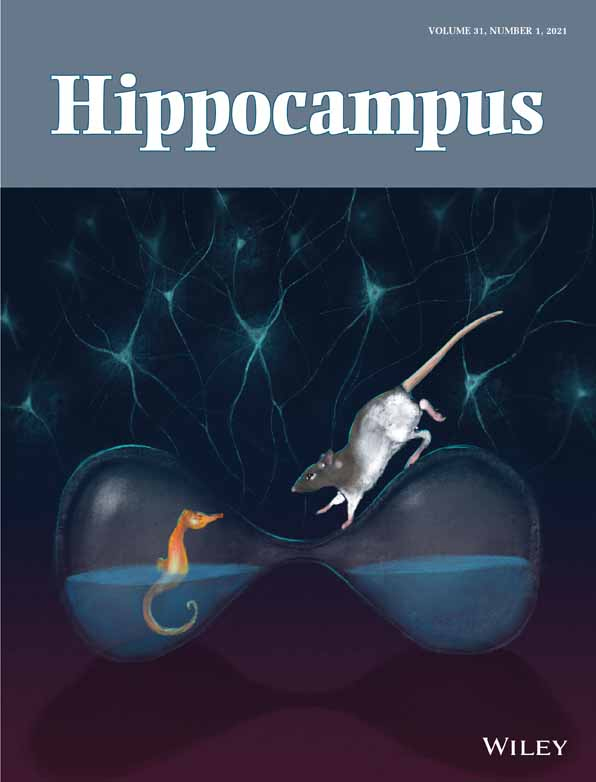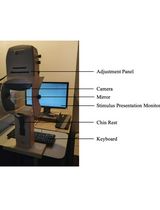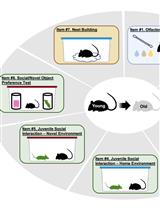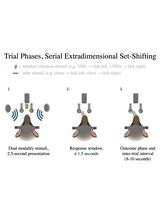- EN - English
- CN - 中文
A Time Duration Discrimination Task for the Study of Elapsed Time Processing in Rats
用于研究大鼠执行时间的时程辨别任务
发布: 2021年03月20日第11卷第6期 DOI: 10.21769/BioProtoc.3965 浏览次数: 3447
评审: Arnau Busquets-GarciaAnonymous reviewer(s)
Abstract
Space and time are both essential features of episodic memory. However, while spatial tasks have been used effectively to study the behavioral relevance of place cells, the behavioral paradigms utilized for the study of time cells have not used time duration as a variable that animals need to be aware of to solve the task. In order to evaluate how time flow is coded into memory, time duration needs to be a variable that animals use to solve the behavioral task. This protocol describes a novel behavioral paradigm, the time duration discrimination (TDD) task, which is designed to directly investigate the neurological mechanisms that underlie temporal processing. During the TDD task, rats navigate around a Figure-8 Maze, which contains a rectangular track with a central arm and a delay box at the end of the central arm. While confined to the delay box, rats experience a 10- or 20-second time delay, during which a tone will play for the duration of the 10- or 20-second delay. When the delay box opens, the rat will choose whether to turn left or right out of the delay box and receive a reward for the correct choice (e.g., 10 seconds = left turn; 20 seconds = right turn). By directly manipulating elapsed time, we can better explore the behavioral relevance of hippocampal time cells and whether the time-dependent activity seen in physiological recordings of hippocampal neurons reflects a neuronal representation of time flow that can be used by the animal for learning and storing memories.
Graphic abstract:
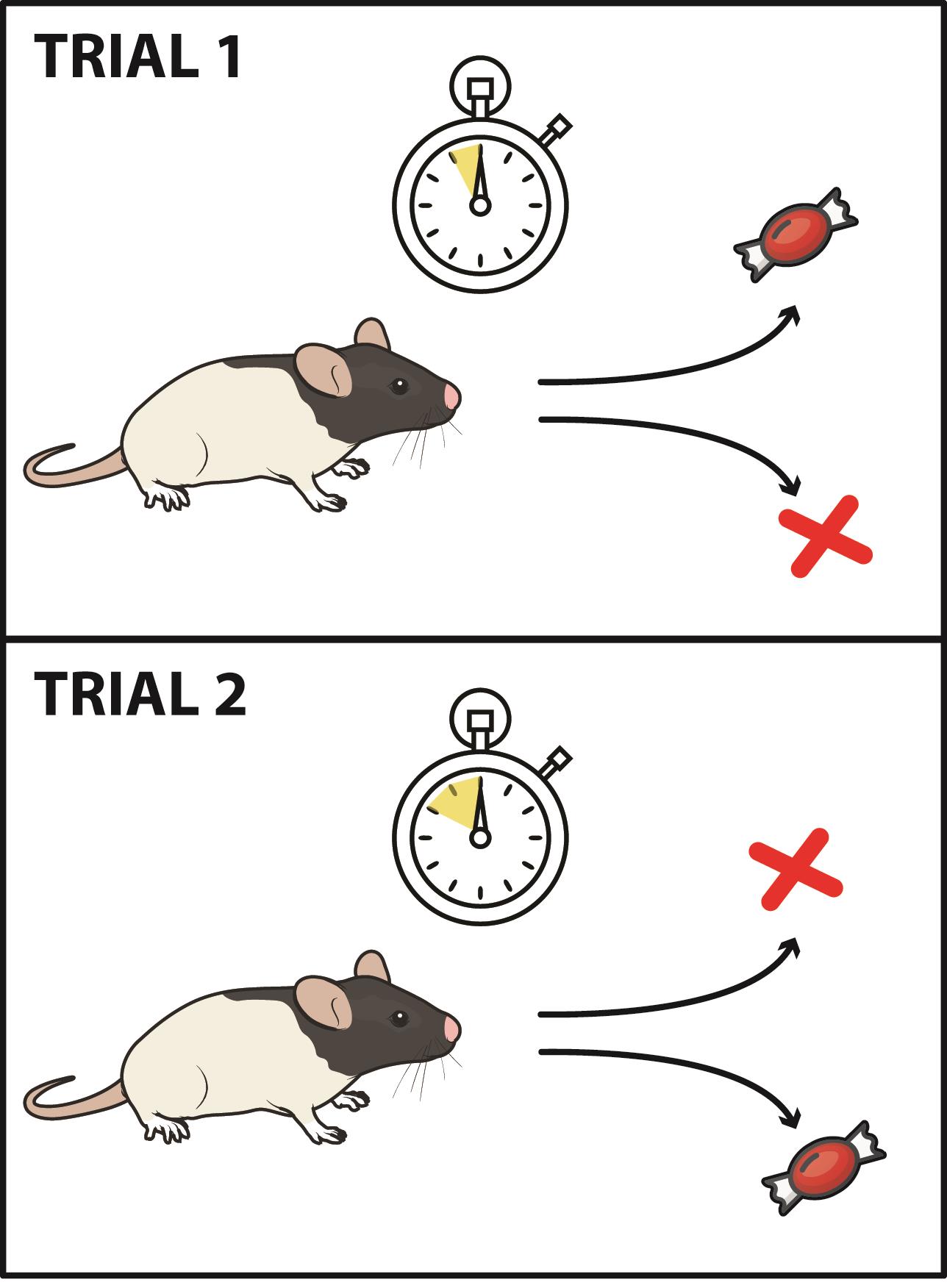
Elapsed time duration discrimination in rats
Background
Episodic memory formation features the organization of events in both a temporal and spatial context. Previous research has identified place cells that fire at specific locations and time cells that fire sequentially during an experience, providing evidence that this contextualizing and organization occurs in the hippocampus (MacDonald et al., 2011; Eichenbaum, 2014). Sequential neuronal firing has also been recently identified in the medial entorhinal cortex (MEC) that projects to the hippocampus, suggesting that the MEC may provide temporal input to the hippocampal cells (Kraus et al., 2015; Schlesiger et al., 2015; Heys and Dombeck, 2018). However, in studies that have examined the firing patterns of these temporally selective cells, what was evaluated and measured was whether events were remembered (for example using an alternation or delayed matching-to-sample task), which does not require animals to discriminate elapsed time intervals. Therefore, the awareness of elapsing time, or the neuronal firing of time cells as a reflection of this awareness, remains largely an assumption. In order to evaluate that time flow is coded into memory, duration must be a relevant variable that animals need to process in order to correctly perform the task. The novel time duration discrimination (TDD) task described here required animals to discriminate between delay intervals in order to receive a reward for correctly completing the task. This task was utilized in a recent study to demonstrate that hippocampal function is required for the discrimination of elapsed time intervals (Sabariego et al., 2021). The protocol presented provides a method in which to study the ability of animals to associate specific intervals of elapsed time with certain outcomes and can be utilized as a tool for monitoring behavior. In addition, this task could be used to examine whether time cell sequences would distinguish time duration when the task requires animals to pay attention to elapsed time, which could shed light on the neural mechanisms of time perception and episodic memory.
Materials and Reagents
Paper towels
Pencil
Eraser
Nitrile Gloves (e.g., Genesee Scientific, X-GEN Nitrile Gloves, catalog number: 44-100 )
Source of dim light (i.e., desk lamp)
Food rewards (i.e., Cocoa PebblesTM)
Weigh boats (e.g., Fisher Scientific, Hexagonal Weighing Dishes, catalog number: 02-202-102 )
Data recording sheets (see Appendix 1)
Experimentally naive, male Long-Evan rats weighing between 300 g-400 g (approximately 3-4 months old); ordered from Charles River
Water
Ethanol 70% (e.g., Fisher Scientific, Decon Laboratories, catalog number: 04-355-223 )
Note: Materials listed in this section are based on what has been successfully used in the experiment using the protocol provided; however, usage of different rat strains/weights/sex, and food rewards could also be successful.
Equipment
Figure-8-Maze (Figure 1)
The maze was constructed from sanded gray hard polyvinyl chloride.
Dimensions: Runways were constructed measuring 10.3 cm wide with 3 cm tall walls on each side. The center stem of the maze was measured to be 120.4 cm with cross pieces at the end of the central stem measuring 90 cm in length. The maze was put on top of five legs measured to be 68.5 cm each. Two moveable barriers were placed 26.3 cm apart at one end of the central stem. The side walls between the two movable doors were 24.5 cm high and created the delay area. The two circles at the ends of the top cross piece are the reward sites (the locations where the rewards are placed at the end of the delay periods).

Figure 1. Figure-8 maze used for behavioral testing. A. Photograph of the figure-8 maze. Delay site is located within the side barriers on the far end of the center stem. B. Illustration of the maze with measurement specifications of each section. Circles identify the reward sites.Weighing Scale (e.g., Fisher Scientific, catalog number: 20031 )
PVC barriers: Dimensions: 10.3 cm wide to fit the runway width
Stopwatch (e.g., Fisher Scientific, catalog number: 14-649-8 )
Laptop Computer
Infrared camera (ZOSI 1080P HD 1920TVL, model: 1AC-2317A-B )
White noise generator (e.g., Portale White Noise Sound Machine from HoMedics Sound Spa; 2,000 Hz, 70dB)
Software
The software listed below pertains to what has been used successfully based on the protocol provided; thus, using an alternative software for scoring could also be successful.
Microsoft Excel
Online tone generator (https://onlinetonegenerator.com/)
Statistical package for data analysis (i.e., GraphPad prism, SPSS, R)
Procedure
文章信息
版权信息
© 2021 The Authors; exclusive licensee Bio-protocol LLC.
如何引用
Tenney, S., Vogiatzoglou, E., Chohan, D., Vo, A., Hunt, T., Cayanan, K., Hales, J. B. and Sabariego, M. (2021). A Time Duration Discrimination Task for the Study of Elapsed Time Processing in Rats. Bio-protocol 11(6): e3965. DOI: 10.21769/BioProtoc.3965.
分类
神经科学 > 行为神经科学 > 认知
神经科学 > 行为神经科学 > 实验动物模型
您对这篇实验方法有问题吗?
在此处发布您的问题,我们将邀请本文作者来回答。同时,我们会将您的问题发布到Bio-protocol Exchange,以便寻求社区成员的帮助。
Share
Bluesky
X
Copy link




